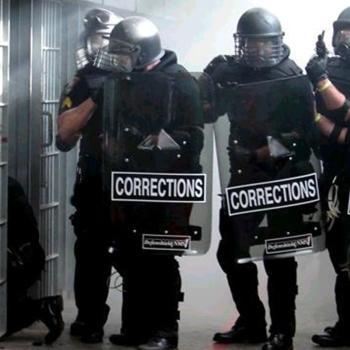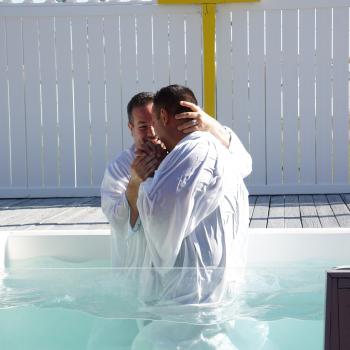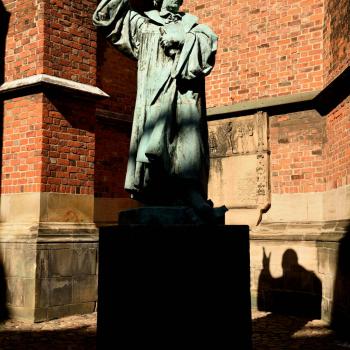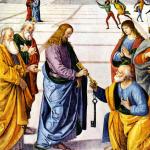Vatican City, Oct 29, 2015 / 07:45 am (CNA/EWTN News).- For Ugandan Archbishop John Baptist Odama, the upcoming visit of Pope Francis is like the visit of a spiritual ‘grandfather’ who offers encouragement and a sense of identity. “It is very wonderful, we are very excited in the country about the coming of the Pope,” the archbishop said. Head of Uganda’s Gulu archdiocese and president of the Ugandan Episcopal Conference, Archbishop Odama spoke with CNA about the Pope’s upcoming trip during the recent Synod of Bishops on the Family in Rome. “For us, we see him as a grandfather coming to the home of the child…coming to see how this child is (living) the family life in his home.” Pope Francis’ presence will strengthen the Ugandan people, the archbishop said, “giving us a sense of identity and a sense that we belong, and he is our father and we are also his children and he is guiding us to our ultimate father, God.” The Vatican officially confirmed the Pope’s Nov. 25-30 trip to Kenya, Uganda and the Central African Republic Sept. 10. Francis himself had first announced his intention to travel to Africa – specifically the Central African Republic and Uganda – during a news conference while returning from a trip to Sri Lanka and the Philippines in January. He confirmed the plans in a June 12 meeting with hundreds of priests from around the world participating in the Third World Priests Retreat in the Basilica of St. John Lateran when he answered a question from an African priest about when he planned to visit. The Pope’s schedule for the trip – packed with interreligious encounters and focus on the poor – was released earlier this month. He will set foot in Kenya first, where he will stay from Nov. 25-27, before moving on to Uganda Nov. 27-29. His last stop will be the Central African Republic, from Nov. 29-30. His visit falls just ahead of the Central African Republic’s presidential transition, and just after the 50th anniversary of the canonization of the Uganda Martyrs. Saint Charles Lwanga and his 21 companions were killed by the king in the 1880s alongside 23 Anglican converts to Christianity for refusing to recant their faith, and were canonized Oct. 18, 1964, by Bl. Pope Paul VI in St. Peter's Basilica. Preparations have already begun for the celebration of the Golden Anniversary of the canonization, with the local Church holding a diocese-wide conference on the 22 saints. The Shrine of both the Anglican and Catholic martyrs at Namugongo will be Francis’ first main stop in Uganda. After arriving at the Ugandan airport of Entebbe the evening of Nov. 27, the Pope will head to the shrine the next morning, where he will celebrate Mass. Later he is scheduled to meet with youth and visit a charity center before heading back to the archbishop’s residence, where he will meet with the country’s bishops before holding an audience with priests, religious and seminarians. He will depart for the Central African Republic the next morning. In his comments to CNA, Archbishop Odama noted that the country is buzzing with preparations, both on the level of the government and the local Church. While the government of Uganda is taking care of practical things that don’t necessarily have to do with Catholics, those who practice the Catholic faith are busy organizing the Pope’s Mass at the Namugongo shrine, “where so many people will come with all the interest and enthusiasm.” Archbishop Odama said that Pope Francis will likely encourage Ugandans to be like the martyrs, and “to follow the example of his brothers and sisters who died for us.” Francis, he said, “is coming to encourage us in that one. So we look with great hope and are preparing ourselves. I think God will bless his visit and it will be a joy for us all.” Before heading to Uganda, Pope Francis will visit Kenya, where he will meet with their president, Uhuru Kenyatta, and the local authorities after his arrival in Nairobi. Over the next two days, the Pope is scheduled to hold an interreligious meeting, celebrate Mass at the University of Nairobi, pay a visit to the United Nations Office in Nairobi and hold an audience with the country’s priests, religious and seminarians. He will also travel to Nairobi’s poor Kangemi neighborhood and meet with Kenya’s bishops before departing for Uganda. After Uganda, Pope Francis will make his final stop in the war-torn Central African Republic. Once he lands in Bangui the morning of Nov. 29, he will visit with the country’s civic leaders and interim president, Catherine Samba-Panza. The Pope will then visit a refugee camp before holding separate audiences with the country’s bishops and Evangelical community. Later that day he will celebrate Mass with priests, religious, catechists and youth at the Cathedral of Bangui. After celebrating Mass, Pope Francis will hear the confessions of some young people before leading a prayer vigil in front of the cathedral. Before heading back to Rome Nov. 30, Francis will meet with the country’s Muslim community in the central Mosque of Koudoukou and celebrate Mass at the Barthélémy Boganda Sports Complex. He is expected to arrive back to Rome at close to 7 p.m. local time. Please see below for the Pope’s full schedule: Wednesday, Nov. 25, 20157:45 a.m. Departure from Rome Fiumicino to Nairobi, Kenya5:00 p.m. Arrival at Jomo Kenyatta International Airport in Nairobi Welcome ceremony at the State House6:00 p.m. Courtesy visit to the President of the Republic at the State House in Nairobi6:30 p.m. Meeting with the civil authorities of Kenya and with the diplomatic corps Thursday, Nov. 26, 20158:15 a.m. Interreligious and Ecumenical Meeting in the Salon of the Apostolic Nunciature in Nairobi10:00 a.m. Holy Mass on the Campus of the University of Nairobi3:45 p.m. Meeting with clergy, religious men and women, and seminarians, at the athletic field of St Mary’s School5:30 p.m. Visit to the United Nations Office in Nairobi (U.N.O.N.) Friday, Nov. 27, 20158:30 a.m. Visit to the poor neighborhood of Kangemi in Nairobi10:00 a.m. Meeting with young people in Kasarani Stadium11:15 a.m. Meeting with the Bishops of Kenya in the VIP room of the Stadium3:10 p.m. Farewell ceremony at the Jomo Kenyatta International Airport in Nairobi3:15 p.m. Departure by air from Nairobi for Entebbe4:50 p.m. Arrival at Entebbe International Airport in Uganda Saturday, Nov. 28, 20158:30 a.m. Visit to the Anglican Sanctuary of the Martyrs at Namugongo9:00 a.m. Visit to the Catholic Sanctuary of the Martyrs at Namugongo9:30 a.m. Holy Mass for the Martyrs of Uganda in the area of the Catholic Sanctuary3:15 p.m. Meeting with youth at Kololo Air Strip in Kampala5:00 p.m. Visit to the House of Charity of Nalukolongo6:00 p.m. Meeting with the Bishops of Uganda in the Residence of the Archbishop7:00 p.m. Meeting with priests, religious men and women, and seminarians in the Cathedral Sunday, Nov. 29, 20159:00 a.m. Farewell ceremony at the Airport of Entebbe9:15 a.m. Departure by air from Entebbe for Bangui in the Central African Republic10:00 a.m. Arrival at M’Poko International Airport of Banguy and Welcome ceremony11:00 a.m. Courtesy visit to the president of the state of transition in the Presidential Palace “de la Renaissance”11:30 a.m. Meeting with civic leaders and with the diplomatic corps12:15 p.m. Visit to a refugee camp1:00 p.m. Meeting with the Bishops of the Central African Republic4:00 p.m. Meeting with the Evangelical Community at the headquarters of FATEB (the Faculty of Evangelical Theology of Bangui)5:00 p.m. Holy Mass with priests, religious men and women, catechists, and young people at the Cathedral of Bangui7:00 p.m. Confessions of some young people; and the beginning of the Vigil of Prayer in front of the Cathedral Monday, Nov. 30, 20158:15 a.m. Meeting with the Muslim community in the central Mosque of Koudoukou in Bangui9:30 a.m. Holy Mass in the Stadium at the Barthélémy Boganda Sports Complex12:15 p.m. Departure ceremony at M’Poko International Airport of Bangui12:30 p.m. Departure by air for Rome6:45 p.m. Arrival at Rome/Ciampino Airport Read more


















